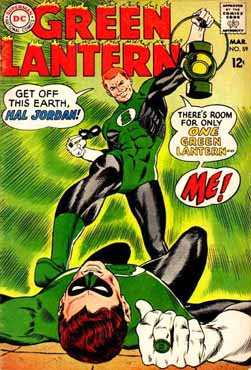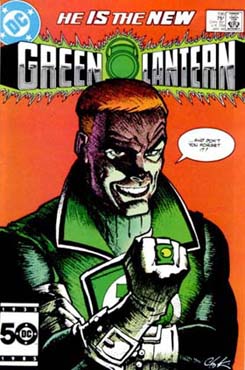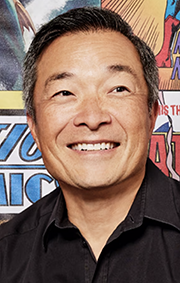Steve Englehart part 4: DC vs. Marvel
By Philip Schweier
October 28, 2025 - 08:00
As a novice comic book writer in the early 1970’s, Steve Englehart was thrilled to work on some of Marvel’s most popular characters. In those days, creators functioned under a “work for hire” business model, creating stories for fee, which were then wholly owned by the publisher. As work for hire Englehart eventually realized he wasn’t creating anything. Since the advent of company royalties, introducing new supporting characters and ideas made him eligible to share in the profits when his creations were featured in other media.
 |
Two examples are Killowog and Guy Gardner, whom Englehart co-created with artist Joe Staton. As a completely original creation, they both receive compensation whenever Killowog is featured in films or video games. But Guy Gardner isn’t so easily acknowledged.
Guy Gardner was first featured in Green Lantern #59 (March 1968), written and drawn by John Broome and Gil Kane, respectively. He made only a few subsequent appearances until Englehart began writing Green Lantern in 1985. Englehart and Staton’s character was far different, and has become much more successful. However, the Powers That Be at DC Comics argue that Guy Gardner was originally created by Broome and Kane. Engelhart and Staton’s response was that rather than modify an existing character, they replaced him with someone completely new.
“And as the Guy Gardner we all know becomes the Guy Gardner we all know, nobody thinks about that Guy who got hit by a bus back in the day,” explains Englehart.
 |
Now, thanks to DC Comics publisher Jim Lee, that may change. With Guy Gardner being featured in this year's Superman film, Englehart reached out to Lee.
“I didn’t know him up to that point, and I said, ‘Look, I’m going to be telling this story about how you guys won’t pay us for Guy Gardner every time I’m asked about it. Do you really want that?” They decided they didn’t, so now, all four of us get credit. However, as Broome and Kane are dead, Engelhart is uncertain whether he and Staton will receive all the royalties or only half, with the other half reverting to DC Comics.
Though hesitant to say Marvel Comics cares about its creators, Englehart feels he’s been well treated. “With Marvel, it’s a flat rate,” he explains. “If Shang-Chi shows up in a movie, I get a certain amount of money. With DC characters, it’s always a percentage of the gross of the thing, so it’s to be determined with Guy Gardner.”
Englehart is hopeful that 40 years of DC Comics disavowing his contribution to Guy Gardner has come to an end, thanks to Jim Lee.
 |
| DC Comics publisher Jim Lee |
The experience reinforces Englehart understanding that between DC and Marvel, DC’s culture is more corporate, beholden to its investors to save money wherever possible. “DC, to me has always been a corporation that has hired people to produce content for them. They may have enjoyed their work and had pride in it, but DC’s approach was always, ‘We’re a corporation and we’re buying work from you guys.’ I don’t think Jim Lee epitomizes that but I have a feeling there’s a group of people there who still do,” says Englehart. “Jim seems like a good guy.”
Related Articles:
Steve Englehart part 4: DC vs. Marvel
Steve Englehart part 3: Back to Marvel
Steve Englehart part 2: Batman and the Justice League
